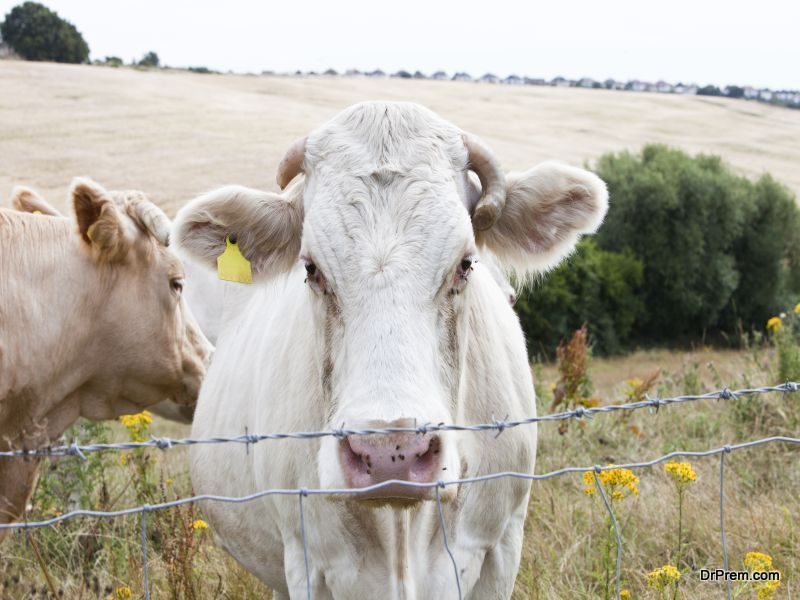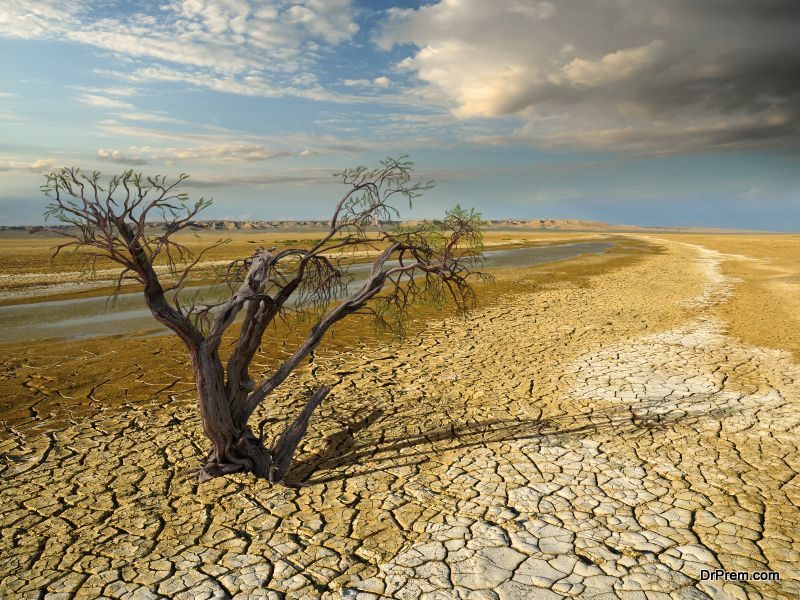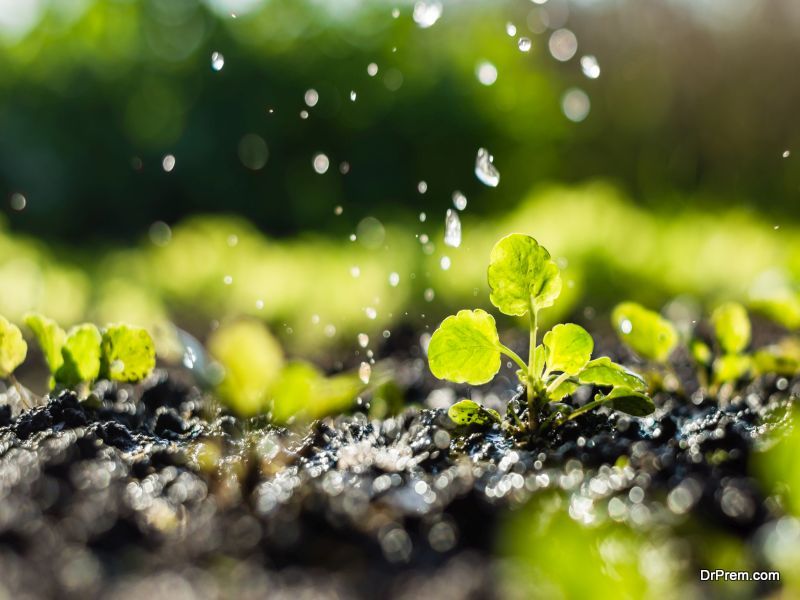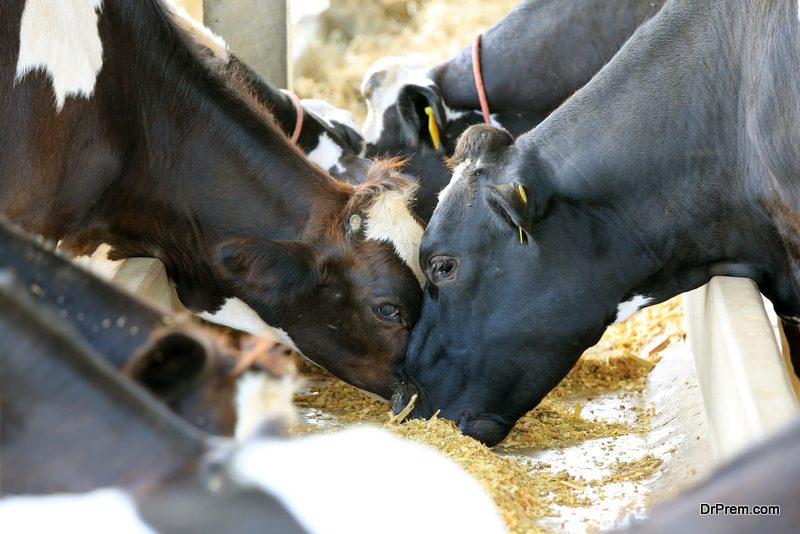Drought is a situation which cattle farmers have to deal with. Drought takes a toll on pastures which will not be enough to feed your cattle. There are some strategies which farmers can adopt to minimize losses during drought. You can stay informed about the climate and weather in your area, and make the necessary preparations to fight the drought. This includes optimum water use and planting the right drought resistant crops. Here are some tips to help you manage cattle during drought conditions:
Tips to manage cattle during drought conditions
Divide pastures into grazing slices
 It’s tough managing farm animal feed especially cattle during drought. One of the best solutions to manage cattle during drought conditions is to create grazing slices for each day. This way, your pasture will get the time to recover and grow back. Set up electric fences to create the daily pasture.
It’s tough managing farm animal feed especially cattle during drought. One of the best solutions to manage cattle during drought conditions is to create grazing slices for each day. This way, your pasture will get the time to recover and grow back. Set up electric fences to create the daily pasture.
How does this system work so seamlessly? – because the grass at each paddock gets ample time to grow back without cattle chomping on and trampling on them. Suppose a full loop of grazing rotation takes 90 days, then if you divide into daily grazing areas, then your grass gets 89 recovery days. Switching to small daily patches for grazing will make the cattle to feed as soon as they enter the pasture, rather than crushing the entire pasture while eating in the picky manner that cattle usually do.
This major change in behavior protects the best of your grass/plant species from overgrazing before/during the drought.
Experts suggest setting up portable electric fence to divide your pasture into daily grazing pastures.
Leave 6-10 inches stubble after every grazing
 When the cattle start to graze as a mob, they will leave a uniform height stubble of grass. A taller stubble is very important during a drought, and it a very good way for water efficient farming. This is because, the taller grass protects by providing shade to the soil, and the soil’s moisture is saved from being dried up by air movement. This will reduce drought severity and is one of the best ways to managing farm during water scarcity.
When the cattle start to graze as a mob, they will leave a uniform height stubble of grass. A taller stubble is very important during a drought, and it a very good way for water efficient farming. This is because, the taller grass protects by providing shade to the soil, and the soil’s moisture is saved from being dried up by air movement. This will reduce drought severity and is one of the best ways to managing farm during water scarcity.
The grass stubble stops the soil from becoming sun baked and hard and lose even the tiniest amount of rainfall to runoff and evaporation. Whenever it rains, even a little, the stubble allows the raindrops to be absorbed into the ground, creates puddles which gives rain more time to be soaked into the ground before it is lost to runoff. So grass stubble is a water efficient farming method you should consider.
Taller grass means deeper roots which allows for more moisture to get in the ground and improve soil moisture. If your stubble can be maintained at a 6-10 inches height, the root can get a critical mass to support much faster plant growth, according to studies. So even in a drought, you will have more grass and be better able to manage cattle during drought conditions.
Combine herds into fewer groups
Combining herds has a lot of benefits. A bigger herd leads to a higher mob grazing effect. This means your pastures are used more efficiently. You also require less resources to move them around every day and you can plan the use of your pastures more efficiently.
Build your drought hay reserve
 When the times are good, you have to stock up on your extra grass, as your drought reserve. Keep refreshing your stock every year if you don’t manage to use it up. A good strategy is to sell the oldest hay in the years when hay is expensive and build your hay reserve when hay is plenty and cheap. In this way you will always have enough hay to manage cattle during drought conditions, when your grass pasture resources are reduced.
When the times are good, you have to stock up on your extra grass, as your drought reserve. Keep refreshing your stock every year if you don’t manage to use it up. A good strategy is to sell the oldest hay in the years when hay is expensive and build your hay reserve when hay is plenty and cheap. In this way you will always have enough hay to manage cattle during drought conditions, when your grass pasture resources are reduced.
Create an emergency fund
 Whenever you have a good year and make a good profit, always set aside some ‘untouchable’ funds for a rainy day, or rather when it doesn’t rain at all! In drought conditions, if you are prepared in advance, you will be able to withstand the drought and come out unscathed.
Whenever you have a good year and make a good profit, always set aside some ‘untouchable’ funds for a rainy day, or rather when it doesn’t rain at all! In drought conditions, if you are prepared in advance, you will be able to withstand the drought and come out unscathed.
One of the ways to do this is to have enough money – it’s a little difficult to raise money during drought as selling your herd won’t bring in much – everyone else would also be selling cattle which would bring their price down. On the other hand, feed prices are much higher. If you have good cash savings, it will help to buy feed, pay mortgage and bills.
Practice water conservation
 Conserving water and practicing water efficient farming will reward you when water is scarce. Researchers advise drip irrigation which helps to conserve 30-50% water as against overhead irrigation.
Conserving water and practicing water efficient farming will reward you when water is scarce. Researchers advise drip irrigation which helps to conserve 30-50% water as against overhead irrigation.
Another of the ideas to save water is to build water storage tanks or ponds. Firstly, you should find out if you can build ponds on your property. You can also have storage tanks which can catch rainwater runoffs from the roof. This can be used to give cattle and for your farm and household needs.
One of the best ideas to save water is to store water by digging ditches along the fields, and also install devices which can analyze your water use.
During a drought, you can manage cattle during drought conditions by planting drought resistant grass varieties. You can also plant early seasonal crops, if you think there won’t be enough water on fall/winter.
Include grain as part of the feed
 To manage feeding during the drought period, consider feeding a limited, high grain diets which can be fed in dry lots and semi-confinement. Experts suggest feeding a pound of high quality grain instead of 2 pounds alfalfa hay/ 3 pounds grass hay.
To manage feeding during the drought period, consider feeding a limited, high grain diets which can be fed in dry lots and semi-confinement. Experts suggest feeding a pound of high quality grain instead of 2 pounds alfalfa hay/ 3 pounds grass hay.
The difference in diet might cause your cattle to behave that they are still hungry, but after about two to three weeks, they will adapt to the reduced feed intake.
Utilize advanced weather technology to stay ahead and know when drought is expected in your region. Weather prediction is available for free online, and use your advance knowledge to reserve hay, save money and destock cattle in time, to survive the drought perfectly!



